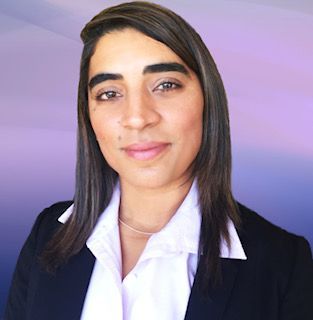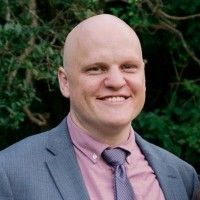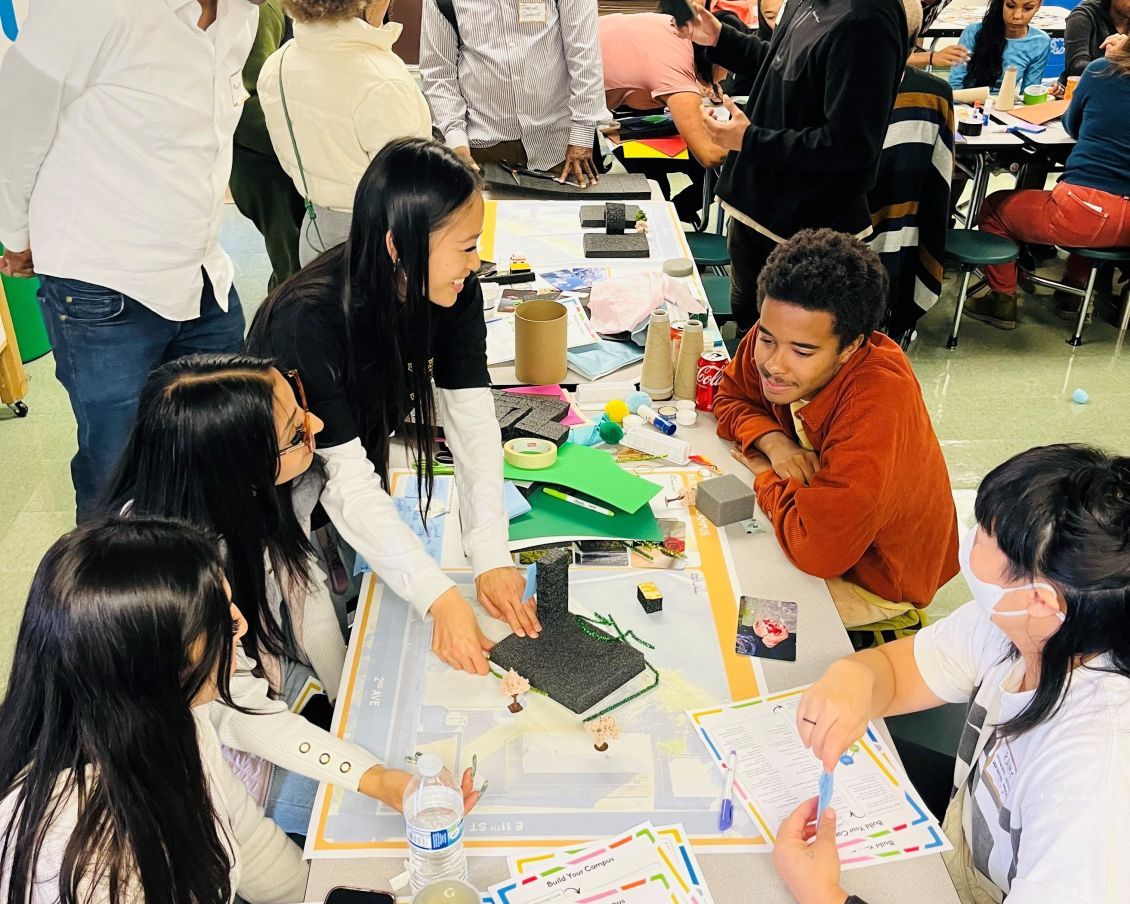"Do nothing for us, without us." That's the momentum driving a career and technical education hub created to connect young people in Oakland, California, to a breadth of housing and other services designed to serve as a ladder to upward mobility.
Homelessness reached record levels last year, with the number of unhoused youth growing faster than adult homelessness. Among youth under 18, homelessness increased 14%; among young adults 18 to 24, it rose 18%.
Young people between late adolescence and early adulthood who are disconnected from family, schools, and meaningful work face unique challenges when it comes to securing a safe, affordable place to call home. Researchers and social scientists refer to this group as transition age youth, or TAY. Enterprise focuses on this important group of people through a collaboration with StriveTogether launched in 2019 to explore how housing and education partnerships can advance economic mobility. The initiative supports a variety of cross-sector partnerships around the county.
A new brief explores the intersection of housing and education challenges that jeopardize the life outcomes of TAY. The brief highlights the Oakland hub, a promising innovation to create a career and technical education nexus to meet the needs and aspirations of the city’s TAY.
To learn more about the hub and impetus behind it, I sat down with Brooklyn Williams, who is helping lead this effort in her role as Oakland’s chief of education and community safety.
How would you describe the housing challenges facing transition age youth in Oakland?
In Oakland, the housing crisis is real for everyone, but it's particularly poignant for our transition age youth. Oftentimes at that age, you're not attached to opportunities that give you enough income to provide for yourself. So you’re not on track to be able to afford to stay here in Oakland for very long.
Young people who identify as LGBTQ have an even higher likelihood of being unsheltered. And once you're housing insecure, you are vulnerable to all sorts of negative things, whether being a victim or a perpetrator of violence or sex trafficking, things that we don't want for our youth. Being housing insecure and low income without access to resources also makes you vulnerable to entering the criminal legal system. We want to serve those young people before they get system involved.

Education & Community Safety
California has pumped a lot of money and resources into building what we call full-service community schools with all sorts of accessible resources. In Oakland, the gap we're trying to fill occurs once a young person graduates from high school. Half of our students are not doing anything post-secondary, whether that's college, sustainable employment, or a technical-education program. As soon as they walk off that stage, they become what we call disconnected youth. They’re not connected to support systems, to services, to any kind of educational programming. And so they go from having a one-stop-shop K through 12 to being completely disconnected.
We have really prioritized system-involved youth who are exiting the foster care system or within the juvenile and adult legal systems. They need support, and there's no doubt those resources need to be maintained. But the message you send to everyone else is that we don't have anything for you, and you have to go get in trouble in order to get a job or get housing. That's part of the pipeline into the system.
What is the Career and Technical Education (CTE) TAY Hub and how can it help address some of those challenges?
The vision for the hub came from 16- to 19-year-olds at Camp Sweeney, our detention camp here in Alameda County. I was running a literacy program called Freedom School. The model is really big on civic education and we decided to teach youth how bills are created. The topic they wanted to talk about was reentry and the 72% chance that they would be back in detention within two years. Those are the overwhelming odds they're facing upon release.
We asked them what they needed to overcome those odds. Essentially, they came up with this vision of the hub, which sounded like a mini-college campus with housing and all the wraparound supports and educational opportunities, all in one place in a very safe environment.
When you go to a four-year college, all of your experiences are geared towards your age group. So what we're doing with this hub is creating a space that's designed for a unique population of human beings: transition age youth whose brain development and social needs are very specific. It offers a soft landing and launching place after high school and provides that bridging support.

Analyst, Enterprise
The hub has brought together people from multiple sectors. What challenges come with this type of cross-sector work? And what’s the impact?
One system cannot solve all of these issues. The schools can't do it alone. The county can't do it by themselves. Certainly, the city can't. Everyone knows that in theory. But it can be really challenging where the rubber meets the road.
Some of the barriers are structural, in terms of how each organization is designed and whether that is conducive to outside partnership. Some of it is territorial and can get political. Who's responsible for this? Whose win is this? Those are just a couple dynamics you encounter when you're trying to do collaborative work across systems. But in my opinion, the juice is worth the squeeze.
Even if we just take it on a financial analysis. There's not one system that has enough money to do everything. And so we need to leverage those resources. We need to not duplicate services. We need to create real ladders and pipelines where all the different systems are contributing instead of putting the onus on our young people and their families to navigate several systems.
I do this work because I have to do this work, for the lives of our young people and the future of all of us.
Brooklyn Williams
When systems come together, it lowers barriers to access. The hub is designed to curate an experience where the best of the best who provide services, educational programming, and housing are in one location and offer those opportunities to young people in a way that is accessible. And that is the impact.
It's also important to foster partnerships like the one we have with Enterprise. I hate trying to reinvent the wheel. You bring people together to provide those shared learnings and examples from other cities and communities.
What can practitioners and advocates do to better support transition age youth?
The number-one thing that doesn't cost anything but goes a long way is to listen. This age group constantly hears what adults have to say. We don’t do a good enough job of modeling active listening. For those of us in the work, we might know that, but we have to always be mindful and take inventory with any engagement. How much was I talking? How much was I listening?
It’s also about putting young people in decision-making power. From the very beginning with the hub, we've recruited and are paying young people (aged 16 to 24) to help design this. They are our quality control.
What do they say? "Do nothing for us, without us." And so don't fall into the trap, no matter how much experience you have working with this population, that you can speak on their behalf. They have their own voices and their own expertise, and we really should be following their lead as much as possible, in an intergenerational partnership.
What brought you to this work and what keeps you motivated?
I got into work with transition age youth pretty early on as a young person. One of the things that influenced me was losing my sister when I was 14 years old. She was murdered in a home invasion. And she left three kids behind. My family is still feeling the ripple effects. I have an intimate experience with that type of generational trauma and how it impacts families and young people.
And so I've decided to channel my emotions into this work. It's kind of dedicated to her, if you will, a form of a tattoo or a libation; everyone has their traditions. But I've always wanted to help families who've gone through that type of experience and also help prevent families from experiencing that loss.
One of my first jobs was with young people in middle school who were low income and highly impacted by all sorts of things. And I really just enjoyed it. It didn't feel like work, and I had the knack for it in terms of being able to earn folks’ trust and be able to hold space and all of those good things.
So I do this work because I have to do this work, for the lives of our young people and the future of all of us. But if I'm being honest with myself, it's also very personal.
Sam Giffin is a senior program analyst on Enterprise’s Impact & Evaluation team.
